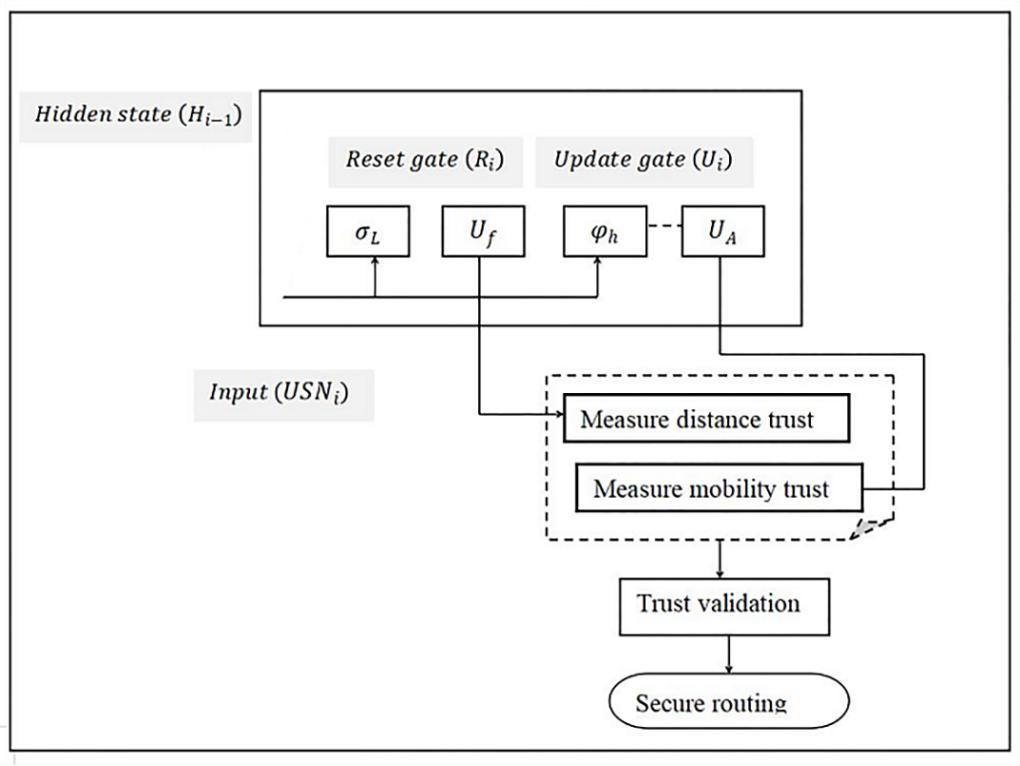Steiner Whisper Clustering and Gated Recurrent Trust-Based Secure Routing for Underwater Sensor Networks
DOI:
https://doi.org/10.17762/ijcnis.v15i4.6401Keywords:
Under Water Sensor Networks, Steiner Triangulation, Chinese Whisper Node, Clustering, Memory Centered, Gated RecurrentAbstract
Underwater Wireless Sensor Networks (UWSNs) have prompted the growing curiosity of several researchers in industrial establishments, surveillance, trading, and academic purposes over the past few years. In recent days, the application of UWSNs in different areas of application has seen a monumental advancement. In UWSN, several techniques are developed by clustering as well as deep learning for optimizing the problem of secure data routing. In this work, an energy-efficient method called Steiner Chinese Whisper Clustering and Memory Gated Recurrent Trust-based (SCWC-MGRT) secured routing in UWSN is proposed. The energy-efficient SCWC-MGRT method for secured routing in UWSN is split into two sections: clustering and secured routing. Initially, based on the energy level, underwater sensor nodes are grouped by employing the Steiner Chinese Whisper Node Clustering model. Here, the energy consumption model is designed separately for node initialization and data forwarding using the Steiner Triangulation function. Finally, maximum residual energy and distance were utilized to choose the cluster head. Then, secured data routing with underwater sensors is carried out by means of a memory-centered gated recurrent trust-based secure routing model. By the memory-centred nature, specified underwater sensor node for current time stamp and hidden state of previous time stamp, validation is through and therefore secured routing is secured. The NS2 platform was utilized to simulate SCWC-MGRT and compare the two other routing methods. SCWC-MGRT method of outcomes appreciably enhances energy efficiency, data confidentiality rate, and delivery ratio without forfeiting too much end-to-end delay.
Downloads
Published
How to Cite
Issue
Section
License
Copyright (c) 2024 International Journal of Communication Networks and Information Security (IJCNIS)

This work is licensed under a Creative Commons Attribution-NonCommercial-ShareAlike 4.0 International License.




